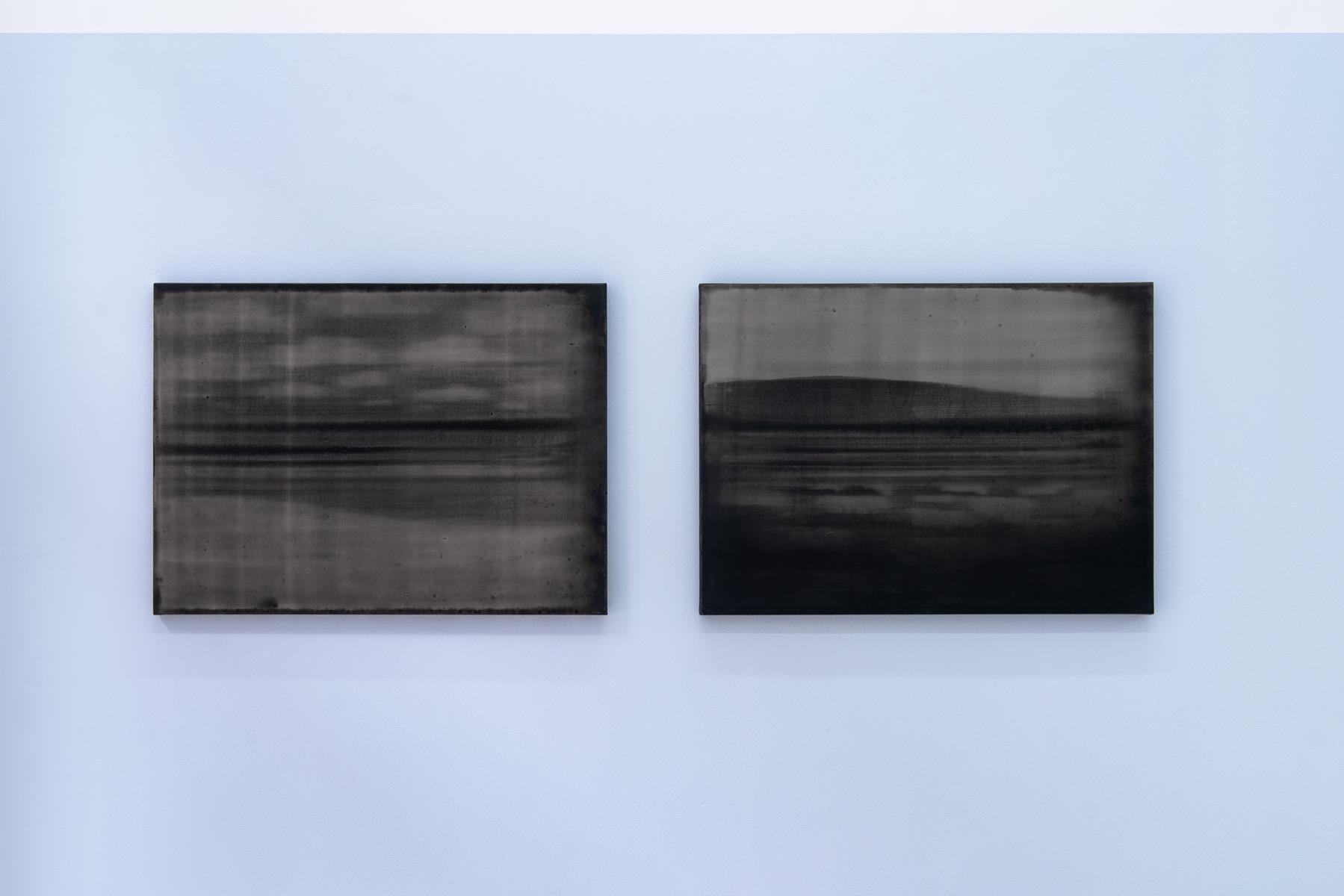Transformations
Cracow, 4.04.2025 - 30.04. 2025
Artists:
Krzysztof Mętel
Mateusz Piestrak
Krzysztof Mętel
Mateusz Piestrak
Conversation (Mateusz Piestrak | Krzysztof Mętel)
M: I feel like we didn’t just put together a joint exhibition—we actually made these works together. It was an interesting process. Do you think that comes through? What do we say when someone asks, “What is all this about?”
K: I guess you don’t just mean that one of my paintings includes a piece of your old work. After years of sharing a studio, talking about painting, and mostly looking at each other’s half-finished stuff, we’ve ended up on similar paths. Maybe even the same one. It’s cool that now, instead of just chatting in the studio, we can look at our pictures knowing we really understand each other.
M: We definitely influence each other. After all, you’re usually the first to see my work—and vice versa. Maybe that’s a pretty ordinary situation, but I’m becoming more and more fascinated with carefully tracing where (my) images come from. Whether I want it or not, you’re a part of that. I explore my own imagination, but I draw on yours too. Sometimes you toss me your associations by accident, and I spin them into new stories. Sometimes I only find out from you what’s emerging in my work.
K: Imagination has also become important to me lately, though it’s funny—I always go about things the opposite way from you. I start with scraps of old canvas—mine or someone else’s, doesn’t matter—and build new images from them. According to interpretations, according to what my imagination picks up. You could say I build my stories from old paintings.
M: I feel like your creative process has loosened up recently. You know, I didn’t immediately take to your new works—it seemed like the anecdotes and stories you told me were more interesting than what ended up on the canvas. What changed?
K: True, it used to be different—I started from facts I’d read or heard, which I had to understand and research before I could paint anything. Now I’ve returned to my favorite activity from childhood—the pleasure of looking. Instead of catalogues and illustrated encyclopedias, I now look at old paintings someone abandoned. I’m interested in how they painted and what might have been going through their mind.
M: I think you also have a certain attentiveness to objects—things that catch your eye and become the material for your work. I’ve noticed that some items have been returning for years, while others seem like something new, new observations. Do you come across those motifs by accident or do you choose them according to some kind of key?
K: I don’t know. Ultimately, seemingly random associations have some hidden structure. I think I wander on purpose—until something catches my attention. Then I work with those motifs until I understand what draws me to them. I feel like we’ve taken on similar approaches recently, even though we’re making different things—I’ve definitely stopped “planning” works according to some strict formula. I think that’s what our exhibition is about—an intuitive but deep process of transforming images—though I realize that might sound a bit cliché. But to me, it’s important.
And besides, this isn’t just an exhibition about us. I’m happy that now our works will be seen by strangers, with their own sensitivity and imagination. The fact that I can’t be sure what they’ll see in them is actually very freeing. I’m not persuading anyone of anything, not trying to solve anything or prove a point. That’s what it is.
K: You talk about creating images, but now you’re mostly showing drawings—which could be taken as sketches. You’ve added a few paintings, but those are older works. For the first time, while preparing for an exhibition, you’ve drawn instead of painting.
M: I’m going back! I’m not old yet, but I can already look back and see what was important—and what I want to unlearn so I can create the way I want. Even if I wander, I feel like I’m searching for my own “core,” the source of that deep need to “make images.” I’m drawing more now because it feels easy, meaning natural. There’s also one piece from my childhood on display. It moves me that, twenty-something years later, I can return to it and keep drawing with that little painter—new and newer images.
K: Your childhood picture shows the cosmos, and my newest painting is “Journey to the Center of the Earth.” That’s an interesting loop. I never cared much for that book, but the idea of that kind of journey always intrigued me. I thought of it while looking at the structure of an old painting—some failed experiment, a flop. I’m surprised by that painting myself.
M: There’s a lot of travel here—smaller and bigger journeys.
K: There’s also a lot of time travel. Old paintings—mine and yours—a childhood drawing, sketches that hint at what’s to come. I used to paint like this, and now I paint like that. It’s as if, throughout this whole conversation, we’ve been moving along a timeline. Lately I think of traveling as a parallel to what happens in our studio. I guess the title of my painting didn’t just come from the look of its surface. Looking at your drawings too, I get the sense they record continuous movement, the motion of the person drawing. Maybe he walked past a flood-soaked football field, or went into the forest and saw birdhouses, or finally peeked into a basement where plants are hiding from the frost.
M: And eventually he hid underground himself—to draw in peace. And now viewers can follow in his footsteps. Or at least catch his trail. This conversation is a helpful signpost.

















